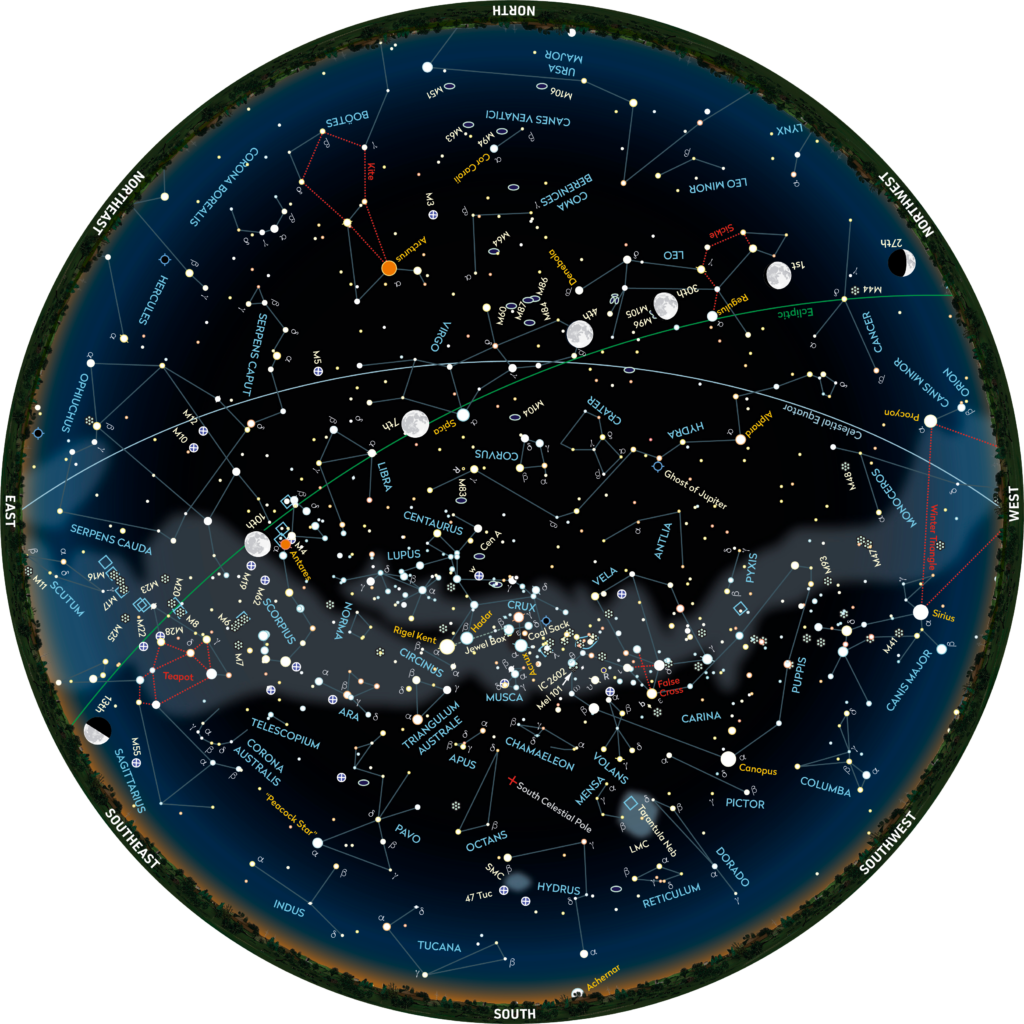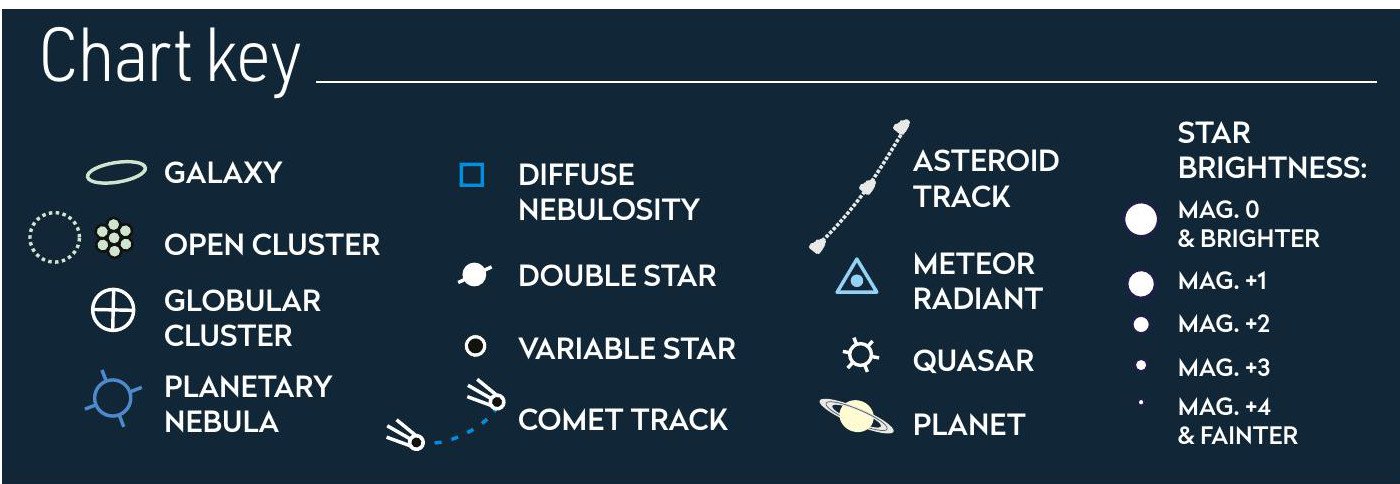Catch a rare type of solar eclipse, an Emu on the horizon and the sights of the Southern Pleiades


When to use this chart
1 April at 00:00 AEDT (13:00 UT)
15 April at 23:00 AEST (13:00 UT)
30 April at 22:00 AEST (12:00 UT)
The chart accurately matches the sky on the dates and times shown for Sydney, Australia. The sky is different at other times as the stars crossing it set four minutes earlier each night.
APRIL HIGHLIGHTS
Recommended equipment: Naked eye
A rare hybrid solar eclipse occurs on 20 April. Starting out as an annular eclipse in the southern Indian Ocean, it then changes into a total before reaching the westernmost tip of Australia. The centre line will experience 60 seconds of totality at 11:30 WST. All states will see partial phases with maximum eclipse occurring in Perth at 11:21 obscured by 71%, Adelaide (13:30, 21%), Darwin (13:52, 81%), Melbourne (14:09, 11%), Sydney (14:29, 10%) and Brisbane (14:45, 16%) – all local times.
STARS AND CONSTELLATIONS
Recommended equipment: Naked eye
Aboriginal legends include many constellations but vary greatly across this large, isolating country. There are two recurring themes: one is the Emu sitting on the southeastern evening horizon. Made from dark nebulae, its head is the Coal Sack, near the Southern Cross, with its neck stretching down through the pointers, widening to the body in Scorpius and Sagittarius. The other is the Pleiades. The stories vary, but they all refer to seven sisters – talk about a universal concept!
THE PLANETS
Recommended equipment: Naked eye
Venus is the prominent beacon close to the northwest evening sky at the end of twilight. It spends April moving through Taurus, passing close to the Pleiades on 12 April. Mars, in Gemini, is nearby (upper right) moving slowly towards the stars of Castor and Pollux. The thin crescent Moon is below Venus on 23 April, visiting Mars three days later. Turning to the morning, Saturn arrives around 02:00 (mid-month) and is followed by Neptune two hours later.
DEEP–SKY OBJECTS
Recommended equipment: Small/medium telescope
This month, a visit to Carina. The third-magnitude star Theta (θ) Carinae is the brightest member of IC 2602 (RA 10h 43m, dec. –64° 24’). This distinctive open cluster, the Southern Pleiades, has six fifth-magnitude stars within a 1° diameter circle. Like its northern namesake, binoculars reveal about 30 fainter stars. Around 0.5° south of Theta is another open cluster, Melotte 101. Although a bit challenging to find in such a busy star field, this tight (0.2° diameter) collection of faint (12th to 13th-magnitude) stars shows chains and clumps and is worth a visit. Note the fifth-magnitude star on its western edge.
Move 2.6° west of Theta to discover an impressive double star, HJ4306 (RA 10h 19.1m, dec. –64° 41’). It consists of matching white components of mag. +6.5 each, separated by only 2.1 arcseconds.